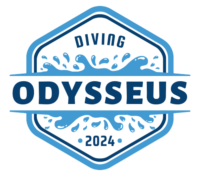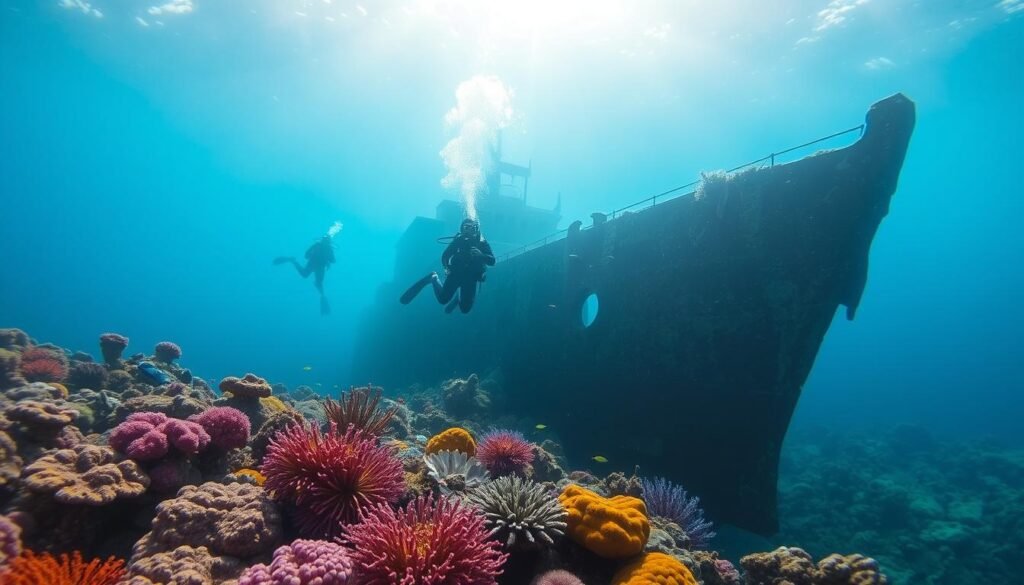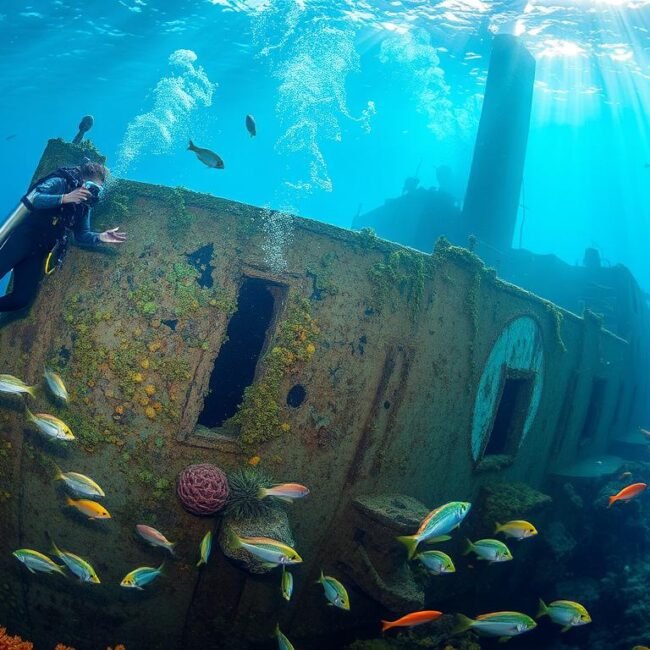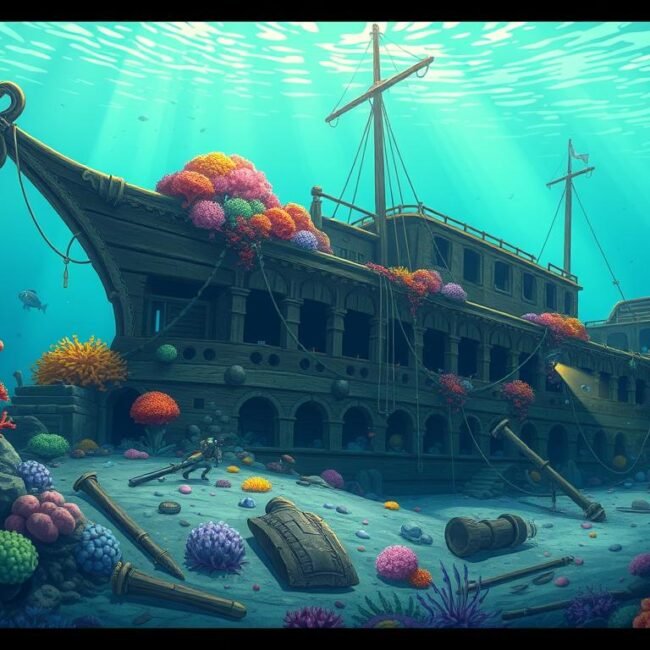Did you know you can get a wreck diving certification in just 2-3 days? It’s surprising, but wreck diving needs special training for safety and fun. As someone who loves exploring underwater, I’ve learned about the dangers of diving into sunken ships and planes.
Getting certified in wreck diving, like the PADI Wreck Diver specialty, is key. It teaches you the skills and knowledge you need. You learn how to handle tight spaces and special gear. This training helps you stay safe and enjoy your dives.
Key Takeaways
- Wreck diving certification is crucial for safety and proper exploration of underwater wrecks.
- PADI Wreck Diver certification teaches essential skills, such as situational awareness, line management, and buoyancy control.
- Specialized training is necessary to navigate the unique challenges and risks associated with wreck diving.
- Proper planning and equipment are vital for a safe and enjoyable wreck diving experience.
- Wreck diving offers the opportunity to explore historical artifacts and contribute to marine ecosystem conservation.
Understanding the World of Wreck Diving
Wreck diving is a thrilling adventure that takes you into the depths of the ocean. These sunken ships, whether lost by accident or on purpose, hold secrets of the past. They are like time capsules, showing us what life was like at sea long ago. As artificial reefs, they also support a rich variety of marine life.
Types of Underwater Wrecks
There are two main types of wrecks: those that sank by accident and those sunk on purpose. Accidental wrecks, like the Benwood and Copenhagen in Florida, were lost due to disasters or accidents. On the other hand, purpose-sunk wrecks are scuttled to create diving spots and help marine life.
Historical Significance of Shipwrecks
Shipwrecks are like windows into the past. They tell the stories of those who sailed the seas. Famous wrecks like the Thistlegorm in Egypt or the Ghost Fleet of Truk in Micronesia give us a peek into history. By exploring these wrecks, we learn about our maritime heritage and the lives of sailors long ago.
“Wreck diving is not inherently dangerous, but it does require specialized training and preparation. Proper certification and safety measures are essential to ensure a rewarding and responsible diving experience.”
Why Specialized Training Matters in Wreck Diving
Wreck diving is thrilling but also risky. It needs special training and certification. The PADI Wreck Diver Specialty course is key for those wanting to dive shipwrecks safely.
Wrecks have tight spaces and overheads that need special skills. Learning to use guidelines, keep buoyancy, and plan dives is vital. This training gives divers the confidence and knowledge to spot dangers, learn about wreck conservation, and dive safely.
- Gas supply failure due to equipment malfunction, negligence, or poor planning is one of the biggest risks for wreck divers.
- Disorientation, commonly caused by silt-out, poses a significant risk for wreck divers.
- Loss of buddy or team separation is a common issue during wreck penetration if not planned properly.
- Collapse, entrapment, or obstruction due to unstable wreck structures is a risk for wreck divers.
- Loss of weight belt can lead to divers being pinned against the wreck ceiling.
- Explosion risk exists in wartime shipwrecks due to potentially unstable munitions and explosives.
The PADI Wreck Diver Specialty course teaches vital skills. It covers using a guideline for safety, carrying lights for navigation, and having emergency tools like a dive knife. Divers learn to handle wrecks gently, as they can be fragile after years underwater.
Specialized wreck diving training is crucial. It teaches divers the skills and knowledge needed for safe wreck dives. This certification is essential for anyone wanting to explore underwater wrecks fully.
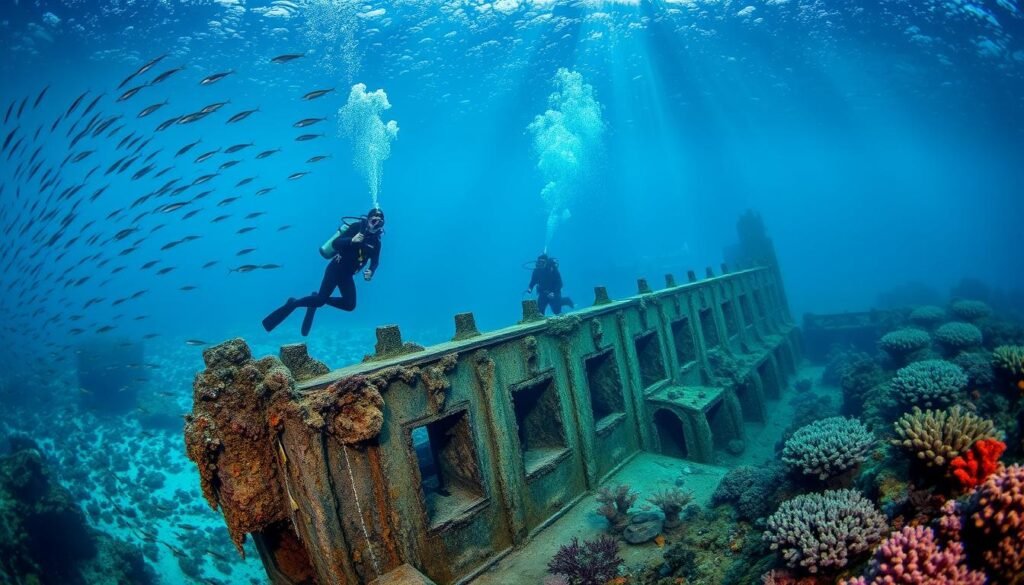
“Proper wreck diving training emphasizes the importance of using a guideline for exit safety, carrying primary and backup lights for navigation, and having emergency tools like a dive knife for self-rescue.”
Essential Safety Considerations for Wreck Diving
Wreck diving is thrilling and full of adventure. But, it also has risks that need special knowledge and training. As a seasoned diver, I’ve found that knowing the unique dangers of wreck diving is key. This includes the challenges of overhead environments and the gear you need.
Overhead Environment Risks
One big worry in wreck diving is being surrounded by the wreck. This makes it hard to get back to the surface. It can cause confusion, clouded water, and getting stuck. Learning how to navigate, manage lines, and control your buoyancy is vital for staying safe.
Equipment Requirements
Wreck diving needs special tools like lights, cutters, and extra air. You must know how to use and keep this gear in top shape. This is crucial for handling any surprises that might happen during your dive.
Emergency Procedures
Having a plan for emergencies is essential. This includes knowing how to deal with cloudy water, find a lost diver, and make a safe ascent. Practicing these steps can save your dive from disaster.
Exploring shipwrecks is an amazing way to see the underwater world. But, it’s important to be careful and respect the dangers. By focusing on safety, getting the right training, and using the right equipment, you can have a safe and fun wreck diving adventure.
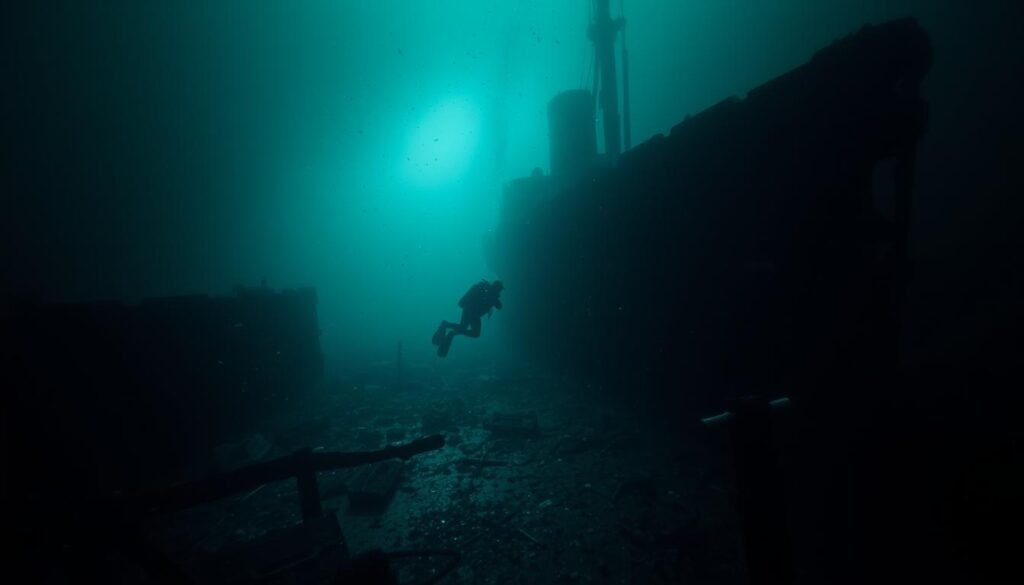
| Wreck Diving Risks | Mitigation Strategies |
|---|---|
| Overhead Environment | Mastering navigation, line management, and buoyancy control |
| Limited Visibility | Utilizing reliable primary and backup lighting systems |
| Entanglement Hazards | Carrying appropriate cutting tools and maintaining situational awareness |
| Equipment Failures | Ensuring redundancy in air supply and other critical gear |
| Environmental Hazards | Recognizing and avoiding sharp edges, marine life, and potential chemical/ordnance issues |
“Wreck diving is not for the faint of heart, but for those who are willing to embrace the challenges and take the necessary precautions, it can be a truly awe-inspiring experience.” – John Doe, Experienced Wreck Diver
Wreck Diving Certification: Course Structure and Requirements
Starting the PADI Wreck Diver Specialty course is thrilling for scuba divers. It’s a journey into the world of wreck diving. The program includes classroom lessons, knowledge checks, and four dives in the open water. This ensures you learn how to safely explore underwater wrecks.
The course teaches you about planning, mapping, and navigating wreck sites. You must be at least 15 years old and have a PADI Adventure Diver certification or similar. You’ll learn how to dive in the “sunlight zone” and follow depth limits.
The PADI Wreck Diver course focuses on safety. During the dive into wrecks, there’s a 2 to 1 student-to-instructor ratio. This means you get close supervision and guidance as you face wreck diving challenges.
For younger divers, there are special options. The non-penetration version is for 10-year-olds with parental consent. The limited penetration course is for 15-year-olds and up, also with consent.
Whether you choose the full or limited course, you’ll gain the skills to dive wrecks safely. You’ll learn to dive with confidence and respect for these underwater historical sites. This training prepares you for exciting wreck diving adventures while keeping you safe.
Navigation Techniques and Skills Development
Wreck diving needs special navigation skills to safely explore underwater shipwrecks. Learning wreck navigation and dive line management is key. It helps avoid getting lost and ensures a good dive.
Line Usage and Management
Using a dive line is a major navigation skill for wreck diving. Divers learn to use the line as a guide to stay on track. They also learn to tie off the line, keep it in sight, and talk to the surface team for safe entry.
Buoyancy Control Mastery
Keeping precise buoyancy control is vital when exploring wrecks. Divers use special finning, like the frog kick, to avoid clouding the water. This skill also helps avoid damaging the wreck, keeping its history intact.
| Navigation Skill | Importance | Training Requirement |
|---|---|---|
| Wreck Navigation | Prevents disorientation and getting lost inside the wreck | Specialized navigation course with open water dives |
| Dive Line Management | Ensures safe and efficient wreck penetration and exit | Hands-on training in line deployment, tying off, and communication |
| Buoyancy Control | Minimizes damage to the wreck and preserves visibility | Specialized buoyancy control techniques like the frog kick |
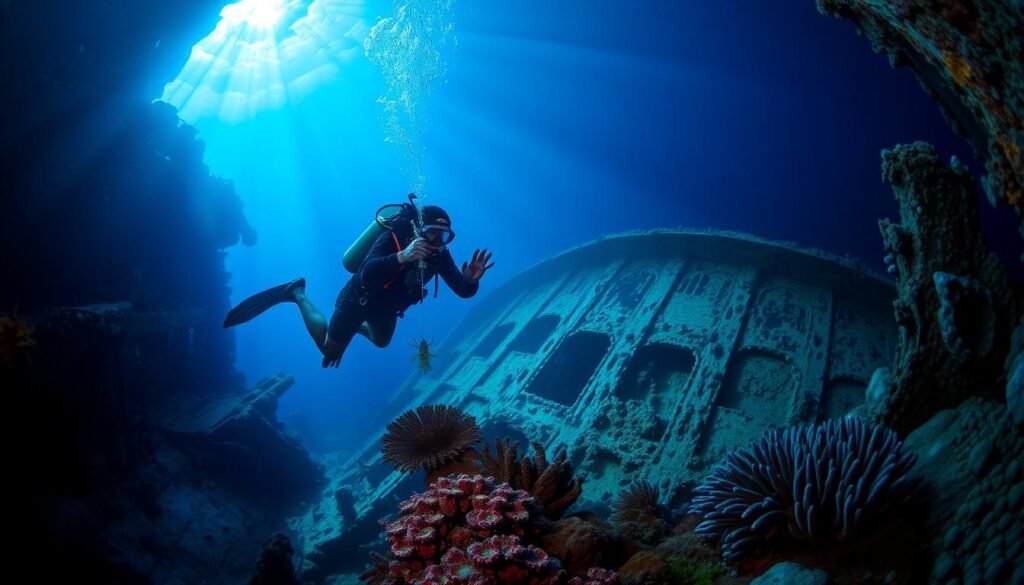
Learning these navigation skills is crucial for safe wreck diving. Divers who get trained can explore these sites responsibly. This way, they protect the environment and keep the wreck’s history alive.
Understanding Wreck Penetration Safety Protocols
Exploring sunken vessels is a thrilling adventure for wreck divers. But, it comes with unique risks. It’s vital to have the right training and follow safety rules to dive safely.
There are three main types of wreck penetration dives. Non-penetration dives let divers explore the wreck’s outside. Limited penetration dives allow them to go inside but not too far. Full penetration dives are the most challenging, requiring advanced skills.
Wreck penetration dives are risky. Divers face dangers like getting lost, disoriented, or trapped. They need good lighting, emergency tools, and gas management skills. Proper training is key to handle these risks.
| Dive Type | Description | Required Skill Level |
|---|---|---|
| Non-Penetration | Exploring the exterior of the wreck | Recreational/Open Water Diver |
| Limited Penetration | Entering partway into the wreck, avoiding fully enclosed areas | Intermediate/Advanced Wreck Diver |
| Full Penetration | Navigating deep into the interior of the wreck | Technical/Highly Experienced Wreck Diver |
Divers should not dive beyond their skill level. Accidents can happen in wreck dives. It’s important to learn from each dive and stay disciplined.
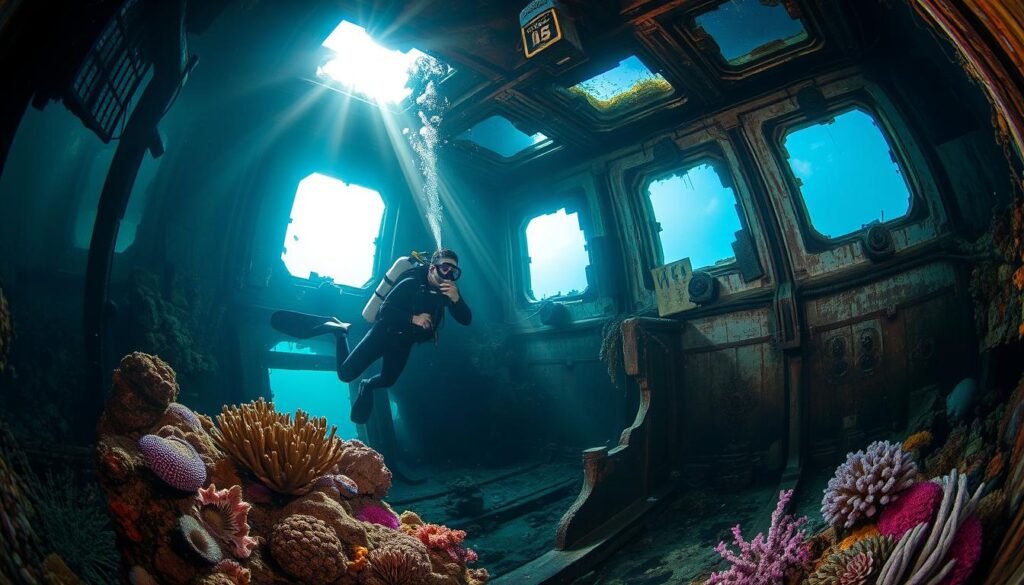
By knowing the risks and following safety rules, wreck divers can explore safely. With the right training and commitment to safety, the excitement of wreck penetration can be enjoyed without too much danger.
Equipment Specifications for Wreck Diving
Wreck diving needs special gear for safety and to explore fully. You’ll need everything from lights to safety tools. These are key for seeing in the dark and avoiding dangers in shipwrecks.
Primary and Backup Lighting Systems
Dive lights are essential for seeing underwater. They help you spot marine life in wrecks. Look for lights that can sink, have a lock, last long, and are protected by rubber.
Having a backup light is also crucial. This is in case your main light fails or runs out of battery.
Safety Tools and Accessories
- Dive knives: Sturdy, sharp blades with both straight and serrated edges to cut through fishing lines, ropes, and nets.
- Sidecutters: Necessary for cutting wires and cables commonly found in wrecks, requiring proper maintenance to prevent rust.
- Underwater slates: Useful for mapping wreck layouts and recording observations, available in wrist-mounted or flat options.
- Wreck reels: Essential for penetration dives, with features like stainless steel or brass construction, large cranks, and locking mechanisms.
- Bail-out systems: Separate breathing systems, often including a 13 cubic feet scuba cylinder, regulator, pressure gauge, and mounting system, for emergency air supply.
Choosing and keeping your gear in good shape is key in wreck diving training. It helps divers stay safe and explore wrecks well.
| Equipment | Key Features | Importance |
|---|---|---|
| Dive Lights | Sinking capability, locking switch, long burn time, rubber shroud | Visibility and exploration of wrecks and marine life |
| Dive Knives | Straight and serrated edges, maintenance with fresh water and corrosion inhibitors | Cutting through fishing lines, ropes, and nets |
| Sidecutters | Attachment with nylon line, rinsing, drying, and corrosion inhibition | Cutting wires and cables found in wrecks |
| Wreck Reels | Stainless steel, brass, or plastic construction, large crank, locking mechanism | Necessary for penetration dives inside wrecks or caves |
| Bail-out Systems | 13 cubic feet scuba cylinder, regulator, pressure gauge, mounting system | Emergency air supply during wreck diving |
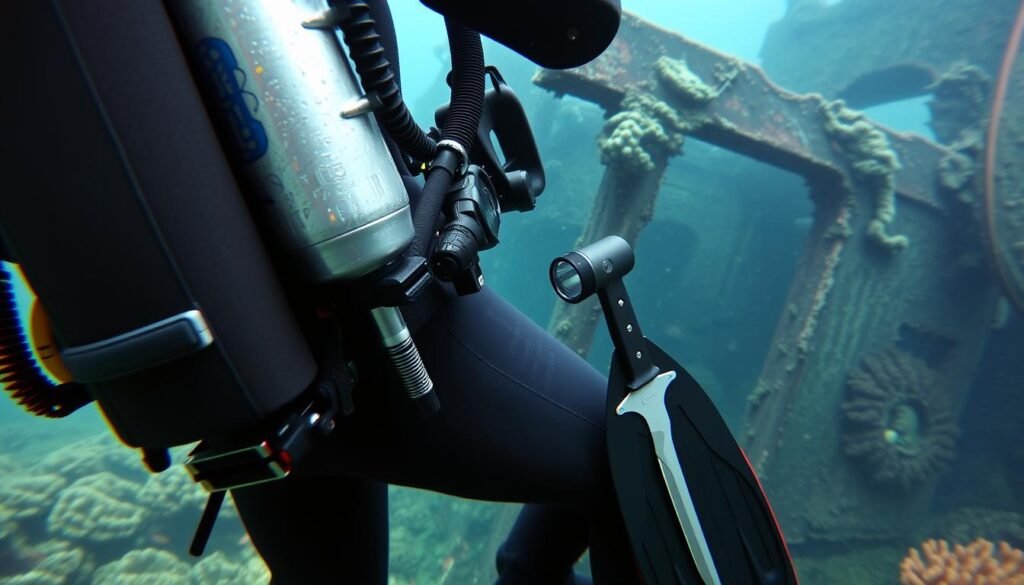
Environmental Impact and Conservation Awareness
As wreck diving enthusiasts, we must protect the marine ecosystems around these sites. Wreck diving courses teach us about conservation and reducing our impact. We learn how to keep wrecks’ cultural and historical value while exploring responsibly.
Through Project AWARE‘s Dive Against Debris, we help fight marine pollution. By joining these efforts, we become part of a community working to keep our oceans healthy. The data we collect helps policymakers and advocates worldwide make a difference.
Getting conservation specialty courses boosts our diving skills and earns us prestigious certifications. Achieving the Master Scuba Diver™ and the rare Eco Master Scuba Diver titles shows our dedication to wreck conservation and marine ecosystem protection. It inspires others to dive responsibly.
FAQ
What is the purpose of the PADI Wreck Diver certification?
The PADI Wreck Diver certification is key for safe diving in sunken ships and planes. It teaches divers how to handle unexpected situations. They learn to use the right equipment and navigate tight spaces.
What types of underwater wrecks can divers explore?
Divers can see many wrecks, like ships and planes that sank by accident or on purpose. Purpose-sunk wrecks are safe for divers, with easy entry and exit points. Historical wrecks, like the Thistlegorm in Egypt, offer a peek into the past and support marine life.
Why is specialized training crucial for wreck diving?
Specialized training, like the PADI Wreck Diver course, is vital. It teaches divers how to safely explore wrecks. They learn to navigate tight spaces, use guidelines, and understand emergency procedures.
What are the key safety considerations for wreck diving?
Wreck diving is risky due to overhead environments and limited visibility. Divers need the right equipment, like dive lights and cutting tools. They must know how to handle emergencies and respect the wreck’s fragility.
What are the requirements for the PADI Wreck Diver Specialty course?
To join the PADI Wreck Diver course, you must be 15 or older and have a PADI Adventure Diver certification. The course includes knowledge reviews, classroom sessions, and four dives. It focuses on diving safely within the “sunlight zone” and at proper depths.
What navigation techniques are taught in wreck diving courses?
Wreck diving courses teach important navigation skills. Divers learn to use guidelines and control their buoyancy. They also practice specialized finning to avoid stirring up silt.
What are the protocols for wreck penetration?
Penetrating wrecks requires careful safety protocols. Divers assess risks and learn to manage their air supply. They also understand the dangers of unstable munitions in wartime wrecks.
What specialized equipment is required for wreck diving?
Wreck diving needs specific gear, like lights for dark interiors and safety tools for entanglement. Divers also carry redundant air supplies and use penetration lines and reels. Proper equipment care is stressed in training.
How do wreck diving courses address environmental impact and conservation?
Courses teach divers about environmental impact and conservation. They learn to preserve marine ecosystems around wrecks. Divers also understand the cultural and historical value of wrecks, promoting responsible exploration.
